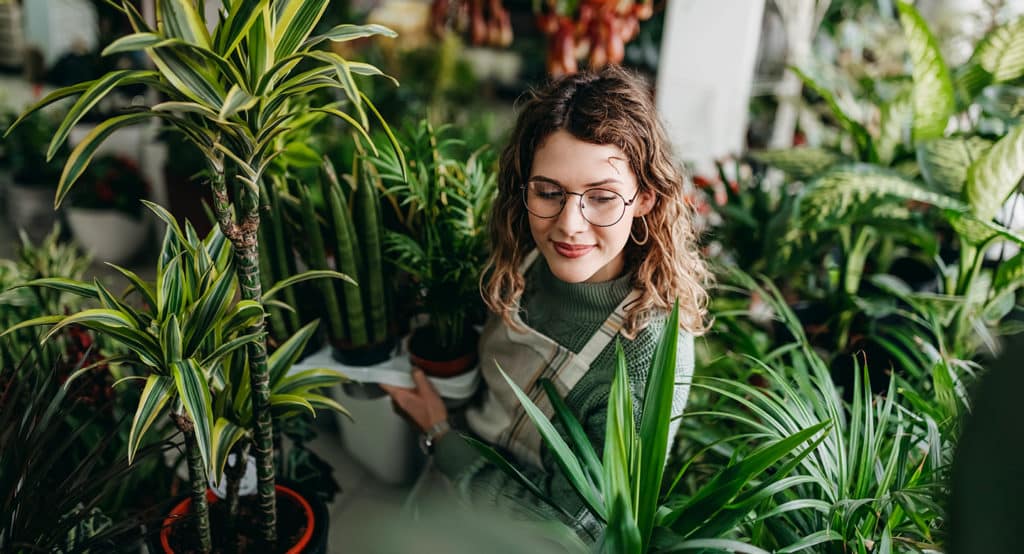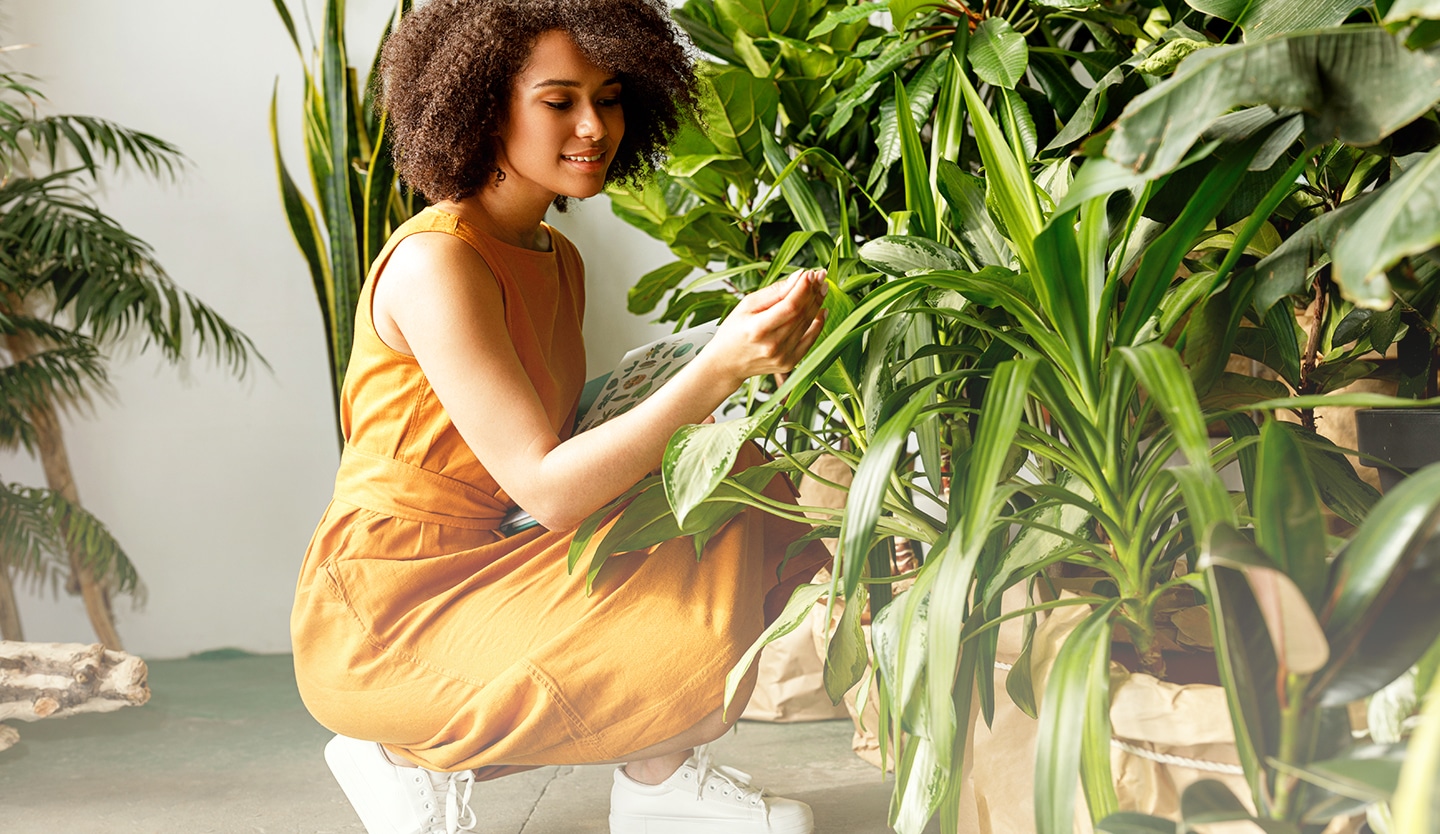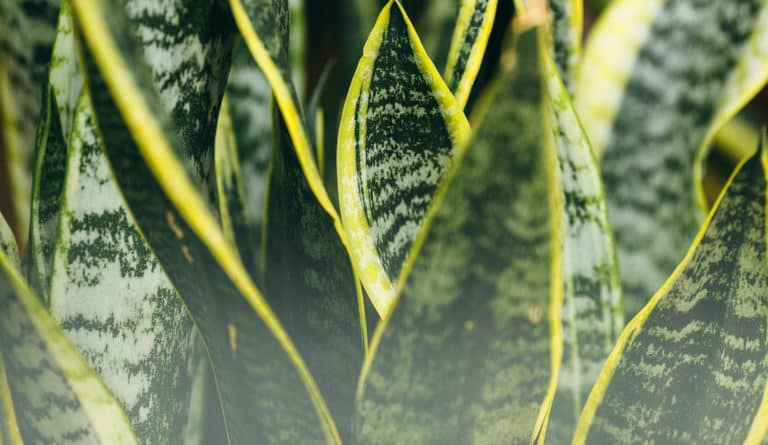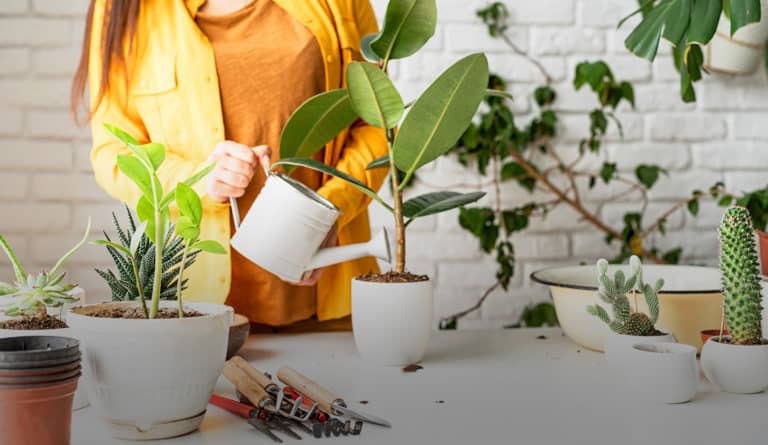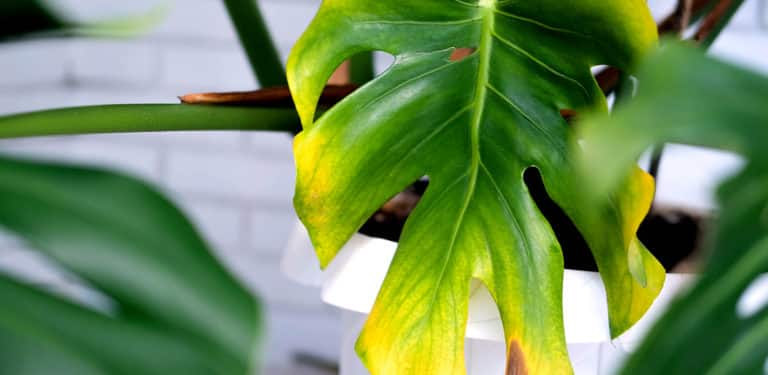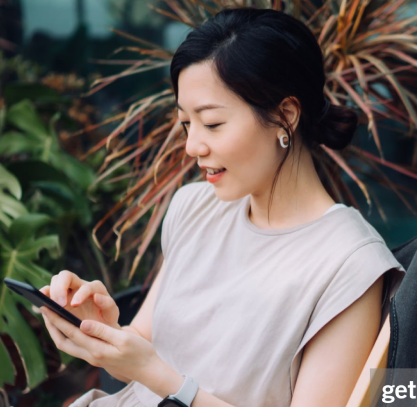When your plant is happy and healthy, you’re going to eventually need to give it a bigger home to let it stretch out its roots! When the plant looks “rootbound”, when almost all of the soil and space in the container is roots, it’s time to go up in size. You may even see visible roots at the top of the container, growing out the bottom, or that you need to water your plant more because it has less soil to hold on to water.
tropicals… you fancy
We’re telling all the secrets here, keeping your plant healthy – and alive – all you need to do is picture it’s homeland, and do what you can to replicate those conditions.
Your plants might have spent their formative first few months in a greenhouse but their species has spent a long time adapting to their native territory. Give them an environment that meets their needs, it will reduce the work and fussing you have to put in to keep your plant looking fabulous.
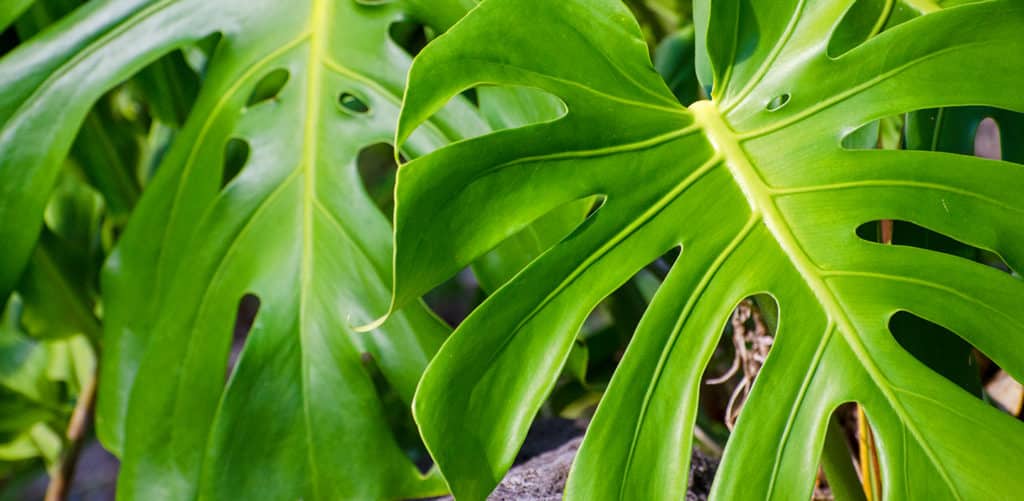
the finger test & weight test
An effective and lo-fi way to feel for moisture in your plant is to Poke your finger into the soil. This method is so simple you can’t go wrong! Poke a finger into the soil and stop when you feel moisture. Water your plant when you poke the soil and it’s dry up to your first knuckle.
Go by weight. Water is heavy, and your dry container will be a whole lot lighter than a well-watered one. Get familiar with how much your plant weighs when thirsty and quenched and use that as a guide. Use both methods at the same time for extra confidence.
ahh sunshine and light
Plants from different areas of the world have different requirements, light isn’t a one-size-fits-all thing. Tropicals love to soak up the sun, but aren’t used to getting direct rays and can even be prone to sunburns. Check the tag on your plant to get an idea of its unique needs and find a spot in your home that best suits it – while plants don’t like being moved around too much, you can always give it a new POV if you need to.
Your beautiful tropical can’t talk to you, but in it’s own way it does communicate. You can see signs of what it needs. Look out for pale or yellowing leaves, or a “stretching” plant that seems lanky – these are signs your tropical needs a little more sun. Brown spots on the leaves could be a sign of burning from too much direct light.
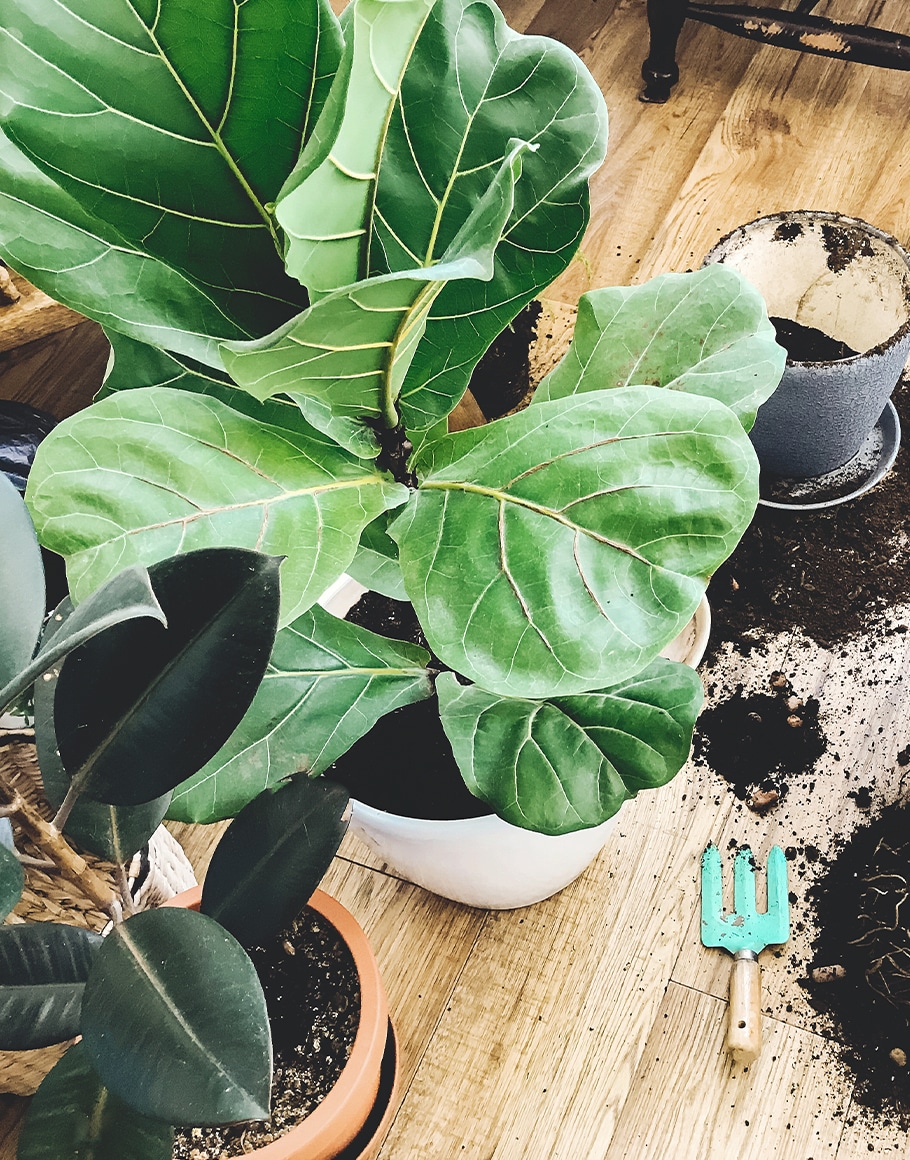
get the size right
Right sizing is as easy as getting a larger container and repotting. No moving van required. It’s simple, but it can get messy. Here are some of our tips for sizing up a healthy, growing tropical:
Start by only going one or two sizes bigger. You might be tempted to go larger but the proportions of your chic living decoration can be off and the excess soil will hold too much moisture and may invite rot into your container.
Buy Choose a container with good drainage. No matter the size, water needs to get in and then get out the bottom. It happens sometimes we fall in love with a decorative pot without drainage, never fear! You can DIY by drilling holes yourself or cheat by planting your beautiful tropical in a container with drainage, and simply hiding that well-draining container inside your decorative one.
Buy potting soil suited to your tropical beauty. When you use tropical-focused soil it will give you both the drainage and nutrition your plant’s needs. Planting from a sterile bag instead of taking soil from outside helps to keep pests out of your home and away from your plant.
